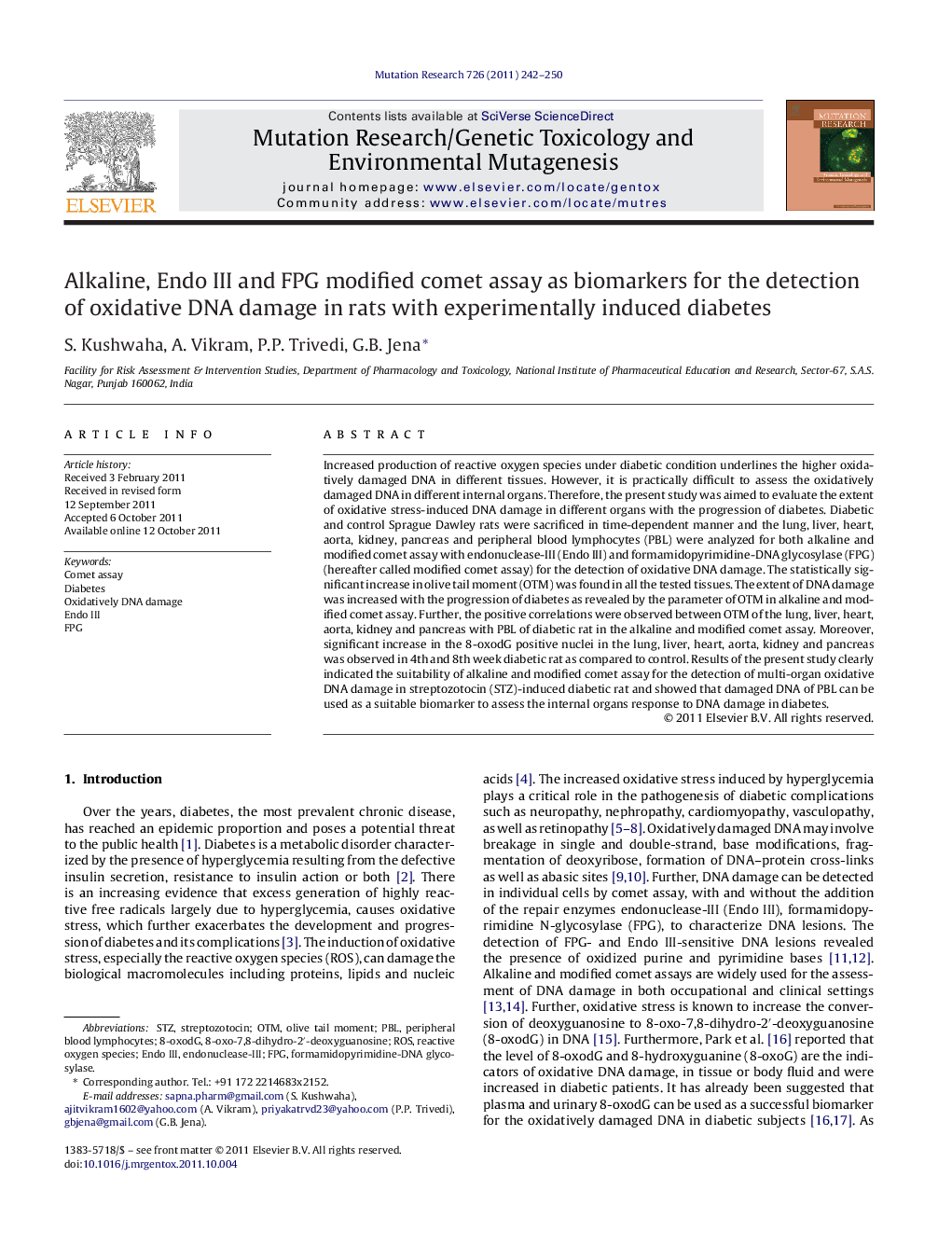| Article ID | Journal | Published Year | Pages | File Type |
|---|---|---|---|---|
| 8456617 | Mutation Research/Genetic Toxicology and Environmental Mutagenesis | 2011 | 9 Pages |
Abstract
Increased production of reactive oxygen species under diabetic condition underlines the higher oxidatively damaged DNA in different tissues. However, it is practically difficult to assess the oxidatively damaged DNA in different internal organs. Therefore, the present study was aimed to evaluate the extent of oxidative stress-induced DNA damage in different organs with the progression of diabetes. Diabetic and control Sprague Dawley rats were sacrificed in time-dependent manner and the lung, liver, heart, aorta, kidney, pancreas and peripheral blood lymphocytes (PBL) were analyzed for both alkaline and modified comet assay with endonuclease-III (Endo III) and formamidopyrimidine-DNA glycosylase (FPG) (hereafter called modified comet assay) for the detection of oxidative DNA damage. The statistically significant increase in olive tail moment (OTM) was found in all the tested tissues. The extent of DNA damage was increased with the progression of diabetes as revealed by the parameter of OTM in alkaline and modified comet assay. Further, the positive correlations were observed between OTM of the lung, liver, heart, aorta, kidney and pancreas with PBL of diabetic rat in the alkaline and modified comet assay. Moreover, significant increase in the 8-oxodG positive nuclei in the lung, liver, heart, aorta, kidney and pancreas was observed in 4th and 8th week diabetic rat as compared to control. Results of the present study clearly indicated the suitability of alkaline and modified comet assay for the detection of multi-organ oxidative DNA damage in streptozotocin (STZ)-induced diabetic rat and showed that damaged DNA of PBL can be used as a suitable biomarker to assess the internal organs response to DNA damage in diabetes.
Keywords
Related Topics
Life Sciences
Biochemistry, Genetics and Molecular Biology
Cancer Research
Authors
S. Kushwaha, A. Vikram, P.P. Trivedi, G.B. Jena,
